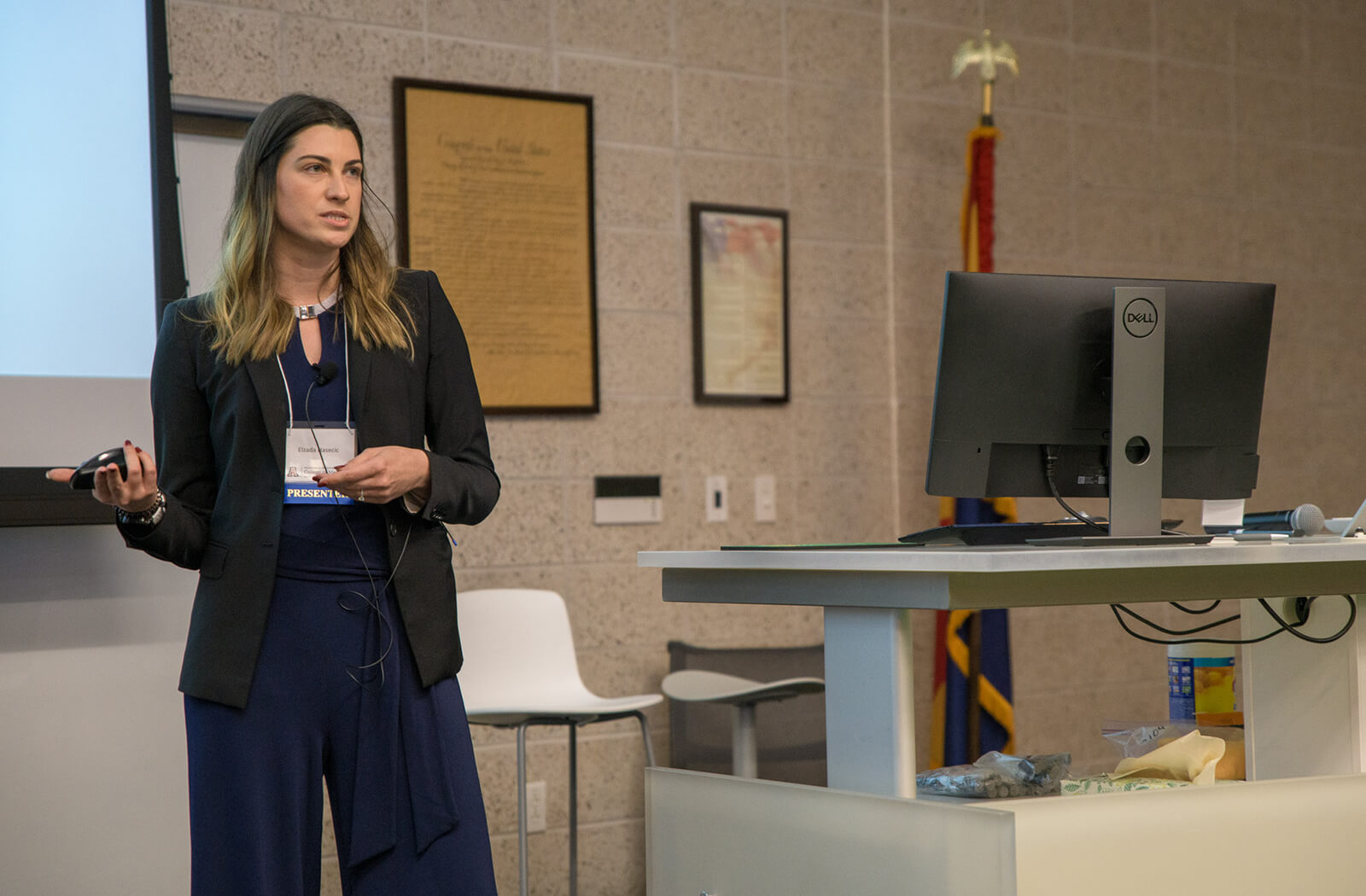
Scholarly Project Profile: Elzada Hasecic

Research led by a medical student at the University of Arizona College of Medicine – Phoenix examined if the implementation of Emergency Telemedicine Service (ETS) in skilled nursing facilities reduced the number of emergency department transfers, hospitalizations and costs associated with these services.

“SNF residents tend to be older and have increased medical complexity and acuity,” Hasecic said. “This, in combination with the limited resources available onsite at SNFs, leaves staff at the facility with limited alternatives to calling 911 and transferring these residents to the emergency department when they have a medical concern or complaint. Since these individuals tend to be chronically ill or immune-compromised, transferring them to an acute hospital can sometimes be harmful because they are at high risk of acquiring health care-related infections.”
ETS is designed through inter-professional collaboration with remote emergency medicine physicians and on-site emergency technicians. For example, when a resident at the nursing facility has a medical complaint or concern, instead of immediately calling 911, the patient can first be assessed by ETS. The emergency technician and nurse are at the bedside in-person and the emergency medicine physician is at the bedside virtually through telehealth.
Hasecic’s research showed that after implementation of the ETS, there was a decrease in transfers to emergency departments of 11.69 percent. Emergency department costs also decreased by 33.6 percent per patient visit. The rate of hospital admission decreased by 15.37 percent and inpatient admission costs decreased by 9 percent per patient. Additionally, the overall monthly cost per patient at the SNF also decreased by 4.42 percent, regardless of whether they required the use of the ETS.
“While conducting some of my preliminary research, I learned that an estimated 53 percent of SNF residents will have at least one hospitalization during the last year of life, and nearly half of those hospitalizations may have been avoided through access to care in alternative settings,” Hasecic said. “As a medical community, we understand that hospitalization of any patient, particularly those with chronic and complex medical conditions, carries a risk.”
The average age of patients who used the telemedicine service was 80 years old — with 56.44 percent of patients female and 43.56 percent male. The most common complaint category was respiratory, with musculoskeletal and general complaints also frequently mentioned. Musculoskeletal complaints required the most transfer, along with cardiovascular/lymph and respiratory complaints. In contrast, all male reproductive, and most digestive and mental health-related complaints were successfully managed with on-site resources and rarely required transfer for further care.
“By reducing the number of unnecessary or avoidable emergency department transfers and hospitalizations, not only would there be a reduction in health care costs, but more importantly, there would be a reduction in the complications associated with hospitalization, ultimately leading to improved patient outcomes,” Hasecic said.
Hasecic’s scholarly project mentor was Jonathan Fisher, MD. She said the research project has helped open her eyes to the realm of clinical research, which she finds enjoyable and rewarding. Hasecic said she is grateful for Dr. Fisher’s mentorship, adding that he consistently challenged her to broaden her knowledge and take her research one step further. Dr. Fisher encouraged Hasecic to submit her abstract at conferences and subsequently was asked to deliver an oral presentation of the study at the National Association of EMS Physicians annual conference in January.
“This research has allowed me to think in a systematic way that cannot be taught in a classroom or even clinically,” Hasecic said. “I have learned about the importance of literature review in the research process and about study design and data interpretation. These skills will go a long way in residency and beyond. It has helped me appreciate the value of research and the hard work that goes into it.”
About the College
Founded in 2007, the University of Arizona College of Medicine – Phoenix inspires and trains exemplary physicians, scientists and leaders to advance its core missions in education, research, clinical care and service to communities across Arizona. The college’s strength lies in our collaborations and partnerships with clinical affiliates, community organizations and industry sponsors. With our primary affiliate, Banner Health, we are recognized as the premier academic medical center in Phoenix. As an anchor institution of the Phoenix Bioscience Core, the college is home to signature research programs in neurosciences, cardiopulmonary diseases, immunology, informatics and metabolism. These focus areas uniquely position us to drive biomedical research and bolster economic development in the region.
As an urban institution with strong roots in rural and tribal health, the college has graduated more than 1,000 physicians and matriculates 130 students each year. Greater than 60% of matriculating students are from Arizona and many continue training at our GME sponsored residency programs, ultimately pursuing local academic and community-based opportunities. While our traditional four-year program continues to thrive, we will launch our recently approved accelerated three-year medical student curriculum with exclusive focus on primary care. This program is designed to further enhance workforce retention needs across Arizona.
The college has embarked on our strategic plan for 2025 to 2030. Learn more.